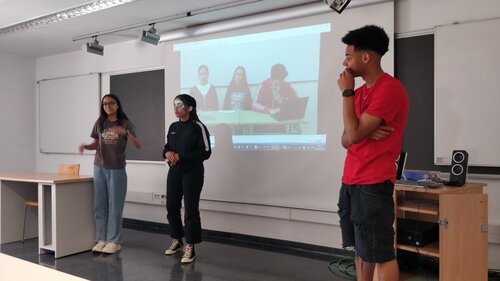Students from Guindàvols Secondary School in Lleida present the results of the 'CiènciArt Ponent' project at IRBLleida
The class was divided into 7 groups and each group carried out an experimental kit following the scientific method
A group of 4th ESO students from the Guindàvols Institute recently presented the results of the project 'CiènciArt Ponent: science and art for future researchers', a multidisciplinary educational project designed to combine the practical application of the scientific method with artistic creativity, at the Biomedical Research Institute of Lleida (IRBLleida).
The students, divided into 7 groups, presented how they had developed their experimental kits, what the results were and also the problems in the research. For example, they carried out techniques such as chromatography, chemical reactions or the construction of a bell and a kaleidoscope.
The project, devised by researcher Marta Molinero of the Translational research in respiratory medicine group, is part of the educational innovation programme "Research, creation and service" (RCS) of the Department of Education. The RCS programme promotes competency-based learning based on challenges arising from the needs posed by organisations in the surrounding area, which take the form of the development of cultural products and services.
As a novelty of this year's IRBLleida proposal, which was the second time that the project was developed, the students also met a scientist with the aim of showing the younger ones some female researchers. Rosalind Franklin, Margarita Salas, Marie Curie, Patricia Bath and Hipatia were some of the women of reference.
The educational project 'CiènciArt Ponent: science and art for future researchers' combines the practical application of the scientific method with artistic creativity by encouraging the exchange of ideas and teamwork. It is based on the realisation of an experience that shows how life and creativity are not incompatible with each other and the presentation to students of STEAM (Science, Technology, Engineering, Art and Mathematics) from a different perspective, and not necessarily as teachings with rigid mathematical principles that leave no room for the imagination.

The students presented the results of their experiments






